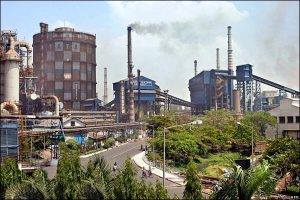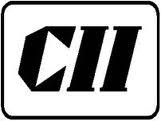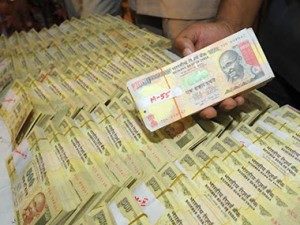
In an AC Nielsen survey for Tata Steel in 2013, Jamshedpur was ranked second in Quality of Life index. Chandigarh was ahead while Bengaluru, Pune and Bhuvaneshwar were behind amongst the only five similar cities surveyed. If you Google on ‘Jamshedpur Ranking’ the only other positive rankings are Loyola School in top 15 schools of India and XLRI Jamshedpur in top 5 business colleges of India. In a Swachh Bharat Abhiyan survey earlier this year, Jamshedpur finished a poor 66th ranking amongst 73 cities.
Demonetization
That ranking would have been massively pulled down by the non privatised areas of TataNagar (the alternate as well as the Railway station name of Jamshedpur) where the Tatas administration ends and state run governance takes care. The fact that majority of the city is ruled by Tatas, its sister companies and its suppliers make this city a primarily salaried middle class city. That explains a top reason why the PM Modi’s demonetization move hardly troubled this city.
Minimal effect of Demonetization
As my close childhood friend Dr Deb Sanjay Nag said, “Except for the first 4-5 days, lines at banks were reasonable. Many grocery and stationery stores installed POS machines by then and hence one could buy biscuits, chanachur, general consumables through cards, aside shopping full scale electronically at Reliance Fresh stores. Even in the first 4-5 days, we exchanged few 1000 Rupee notes in less than 10 minutes”.
“This week vegetable vendors are offering change for the new 2000 Rupee notes. We deposited a few lying old 500/1000 Rupee notes at the Axis Bank at Sonari and were first and last in the queue. Repeatedly I have been withdrawing 2000 in 100s from ATMs next to the main hospital last few days without any queue. Even at its peak (first 4-5 days) there was hardly any anger or bad word while queueing. I have seen angrier queues at Payal, Basant and Karim movie talkies during our college days”.
High concentration of salaried white money class
“Not all ATMs are dispensing the new 2000 Rupee notes, but still it’s hardly impacted life here beyond the first 4-5 days” adds my childhood Loyola school classmate Pabitra Kumar. There is considerable black money in the market specially in the contractor market, but the city primarily being a salaried city has ensured the transition was smooth. Around mid November police did find sack full of 500-1000 Rupee notes dumped in a drain, which would have given a giggle to the white money class.
The other big reason for banks and citizens not getting stressed in this city are the higher concentration of banks and ATMs. For a city nearing 15 lac (1.5 million) population, there are banks and ATMs by the dozen. This is in sharp contrast to many rural areas of the country where there are just one bank and one ATM servicing 10-15 lac rural population. I myself got educated of this fact thanks to news channel anchors (NDTV et all) making a visit there hoping to get some bytes against the government. I thank this black money move which atleast got mainstream media to visit these villages.
High concentration of banks
The reason for the high concentration of banks also relates back to a middle class salaried society, many of whom trust a bank to safeguard their money over fancy bonds or high risk equity products. Even PM Modi’s Jan Dhan Yojana got substantial people here, living below poverty line, follow the society and open bank accounts.
The above also explains why the number of people only looking to ‘converting money’ was limited and most had to only deposit in their own bank accounts. A week after the demonetization announcement, my dad (senior citizen) deposited notes in two banks well within an hour, spending at maximum 10-15mins per bank. This would be sharp contrast to banks in Malda district (a hub of fake currency) and where crores are walking into limited banks seeking conversion amidst long queues and agitated people.
Jamshedpur meanwhile stands a city with primarily white money earning people with limited earning, limited property market growth, limited expenses or even limited avenues to spend. I suspect cities like Bokaro, Rourkela, Salem, Bhilai would have the same traits. And yet a high quality of life index. A sort of life you would expect very citizen in India to get as basic.







Leave a Reply
You must be logged in to post a comment.